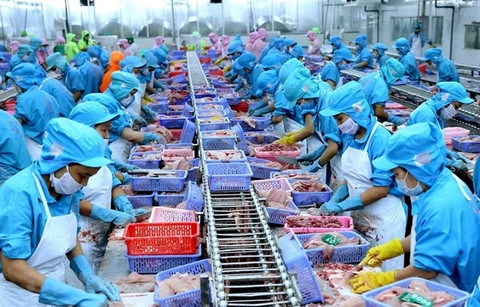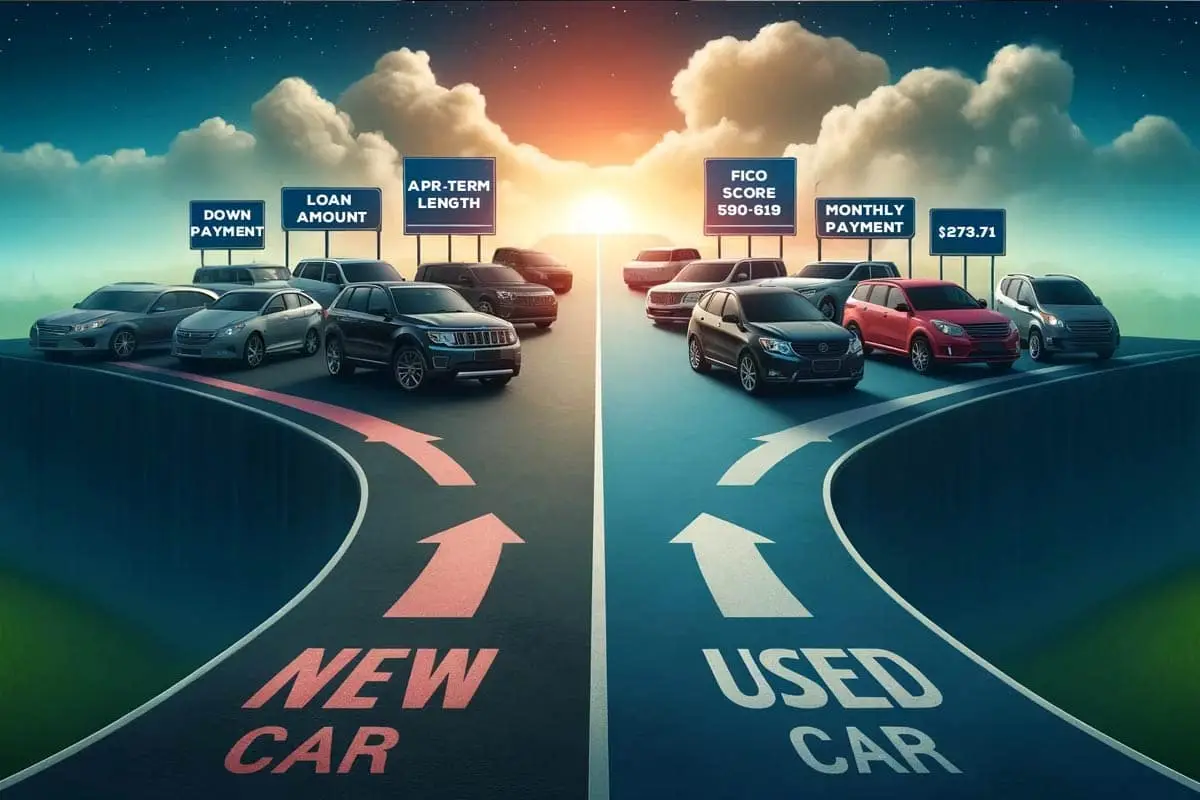[ad_1]

The Russian Federal Service for Veterinary and Phytosanitary Supervision (FSVPS) have recently added two more seafood enterprises to the list of Vietnamese firms permitted to export to the Eurasian Economic Union (EAEU), as of May 4.
In the updated list, the two eligible enterprises include Hung Ca Co., Ltd (DL 126) and Vinh Hoan Joint Stock Company (DL 500).
One of the key export items to the EAEU market are frozen pangasius fillet that are produced in seafood facilities coded DL 126 and DL 500.
In line with this, the Centers for the Agro-Forestry-Fisheries Quality Assurance in Vietnamese localities have been assigned to grant certificates of quarantine for products coded DL 126, DL 500.
Furthermore, local businesses have been advised to ensure they follow all regulations on food safety in terms of processing and exporting seafood products to the demanding market.
Mekong Delta sees progress on public capital disbursement, still behind national average
Deputy Prime Minister Le Minh Khai held a working session with eight cities and provinces in the Mekong Delta, focussing on supervision, mitigation and progress of public capital disbursement in 2022.
All though progress has been made, it was established that more can still be done as the province is still lagging behind the national average in terms of disbursement.
Attending the meeting on Monday afternoon were representatives of ministries and localities of Can Tho, Long An, Vinh Long, Hau Giang, Soc Trang, An Giang, Kien Giang, and Bac Lieu.
According to the Ministry of Planning and Investment (MPI), these eight localities were assigned a total capital of VND39.7 trillion (US$1.7 billion) from the 2022 State budget plan.
Of this amount, VND9.9 trillion (US$428.1 million) comes from the central budget, VND26.6 trillion (US$1.2 billion) from the local budget, and VND3.2 trillion (US$138.4 million) from the Official Development Assistance (ODA). The detailed allocation has been completed for these amounts, except for the ODA funding which has only reached 78.44 per cent.
MPI supports digital transformation for SMEs in Ninh Thuan
As the central coastal province of Ninh Thuan shifted to more service industries, most of its 4,000 small businesses have been told to go digital.
Most recently, the Ministry of Planning and Investment (MPI) coordinated with the People’s Committee of Ninh Thuan and the United States Agency for International Development (USAID) to organise a conference, aiming to raise awareness of the importance of digital transformation in doing business in the province.
MPI’s representative said that with the increasingly developing digital economy in the country and around the world, organisations, businesses and traditional models needed to make drastic changes to continue to exist and develop especially during the pandemic.
To a province with mostly agricultural production like Ninh Thuan, digital transformation was still relatively new, and at the end of March, the provincial People’s Committee issued Decision 330/QD-UBND promulgating the Support Program of digital transformation for enterprises in the province in 2022-2025.
The province said there were about 4,000 businesses, including more than 97 per cent of small and medium-sized enterprises (SMEs), and the development of the pandemic in the past two years had severely affected them.
A province representative said from an agriculture, forestry and fisheries area, Ninh Thuan had achieved many important achievements in many fields in the last 30 years.
Localities clamp down on land hoarding and speculation
Authorities in Ha Noi halted processing on all land partition applications of agricultural land or made up of agricultural areas and non-residential land in a move joined by other localities across the country to combat real-estate speculation and hoarding.
The move was announced in a recent memo by the capital city’s authority to the Department of Natural Resources and Environment.
Last week, the Vietnam News Agency reported a large number of land partition applications were received by southern Tay Ninh Province’s Department of Natural Resources and Environment.
A majority of the applications were for Hoa Thanh and Trang Bang townships as well as border districts such as Ben Cau, Tan Chau and Duong Minh Chau. According to local sources, a hectare of land in the areas is typically purchased at VND2-4 billion (US$87,000-150,000), significantly higher than the market price, by traders and speculators. They later divide the land into smaller lots for resales for VND500-800 million. This practice often allows them to net a profit in the range of 50-70 per cent of original investments.
Rampant hoarding has left the province with a large area of uncultivated agricultural land as farmers no longer have access to them, according to Do Thanh Tam, a local official in Chau Thanh District.
Khanh Hoa’s authority also said the central provincial authority was to conduct a large-scale inspection of all land partition applications. The province said it would no longer accept applications for land located outside of established residential areas.
In recent years, real-estate traders have been exploiting a loophole in the country’s 2003 and 2013 land laws, which currently do not prohibit the partition of agricultural and non-residential land. It has allowed traders and speculators to buy large patches only to divide them into small lots for sales, which resulted in many unplanned residential areas without the infrastructure in place to meet residents’ demands, according to chairman of the HCM City Real Estate Association Le Hoang Chau.
Nguyen Chi Thanh, deputy chairman of the Vietnam Association of Realtors, said in the last few years traders and speculators have been buying land in the outlying districts of large cities in anticipation of future expansion. Thanh said potential investors must keep a cool head and thoroughly study current city expansion plans to avoid scams.
Former minister of natural resources and environment Dang Hung Vo said that originally land partition was allowed to help local residents in rural areas acquire housing construction permits on agricultural land. It was never meant to be exploited by traders and speculators, who typically only care about reselling without any further development of infrastructure. Any economic benefits, therefore, will likely be short-term.
HoSE to provide odd-lot trading starting from June
Investors will likely be able to perform odd-lot trading on the southern bourse starting from June after all necessary tests are completed.
An odd lot refers to an order amount lower than the normal unit of trading. Trading a number of shares from 1 to 99 is classified as odd lot trading.
Speaking on national television, Phạm Hồng Sơn, Vice Chairman of the State Securities Commission (SSC), said that SSC has directed the introduction of odd-lot trading.
The Hồ Chí Minh Stock Exchange (HoSE) is working with securities companies to test the system and will complete it next week.
After everything is accomplished, investors will likely be able to trade odd lots from early June.
Audi Viet Nam recalls Q5 cars to install protectors
Audi Viet Nam has just confirmed that the number of Audi Q5 cars sold in the Vietnamese market that are subject to a recall to install protectors is 726.
The number of vehicles in the company’s warehouse is 122 units.
In the process of continuously researching and monitoring product quality, AUDI AG, a German company specialising in the production of luxury cars, has discovered on a number of Audi Q5 cars produced in a specific time, the information control box can be damaged by moisture penetrating under the back seat.
The recall programme will take place from now until May 9, 2025, and has been registered with the Viet Nam Register to coordinate monitoring.
Domestic car market maintains sale growth in April
Members of the Viet Nam Automobile Manufacturers Association (VAMA) sold 42,359 autos in April, up 14 per cent on the month and 40 per cent on the year, according to a recent VAMA report.
This was the second consecutive month of this year when VAMA members had witnessed an auto sales growth. In March, the growth rate was 60 per cent.
In April, passenger car sales surged 18 per cent on month to 33,588, while 7,795 commercial vehicles found customers, up 2.6 per cent, and 776 special-use cars were sold, up 15 per cent, according to a VAMA report released on May 12.
Sales of domestically-assembled cars and completely built-up (CBU) cars surged by 16 per cent to 25,269 units and 13 per cent to 17,090 units in the month, respectively.
Apart from VAMA members, non-member automakers Thanh Cong Motor and VinFast sold 6,959 units and 2,427 units last month.
In the first four months of 2022, VAMA members sold 132,865 units, up 31 per cent year on year, of which passenger cars were up by 47 per cent, commercial vehicles up by 8 per cent and special-use vehicles up by 19 per cent.
During the period, sales of domestically-assembled cars and imported CBU cars increased by 38 per cent to 79,442 and 22 per cent to 53,423 year-on-year, respectively.
The market performance showed that in the first four months of 2022, the auto sale of VAMA members maintained relatively high growth. Especially, the growth rates of domestically-assembled cars in April and the first four months were higher than the levels of CBU imported cars.
AEON Mall to invest in more projects in Hanoi
Nakagawa Tetsuyuki, general director of AEON Mall Vietnam, said that the business wants to invest in three or four more projects in Hanoi by 2025.
In a recent meeting with Secretary of Hanoi Party Committee Dinh Tien Dung, Tetsuyuki said that by 2025, AEON Mall has a policy of implementing 16 more projects in Vietnam, including up to four projects in Hanoi.
According to the general director of AEON Mall Vietnam, its Hoang Mai project is in the final stages of investment preparation. He said the group has fully prepared in terms of funding, human resources, and equipment so that construction can begin immediately after completing the investment procedures.
He hopes that Hanoi will continue to support the venture and remove obstacles so that this project can start construction in the third quarter of this year.
At the same time, the Japanese businesses also asked the city to support the research and implementation of the AEON Mall project in Bac Tu Liem district.
Before this proposal, Dung reaffirmed that Hanoi is determined to improve the investment environment and administrative reform to create the most favourable conditions to attract both domestic and foreign investment, especially in clean technology.
Dung said city leaders were very interested in reducing the obstacles to the AEON Mall Hoang Mai project and assigned Hanoi People’s Committee to coordinate with Bac Tu Liem district on the projects in the area.
Nguyen Manh Quyen, Vice Chairman of Hanoi People’s Committee, confirmed that he will direct departments and sectors to build legal procedures related to the Aeon Mall Hoang Mai project in order to start construction according to the investors’ proposed schedule.
With the project in Bac Tu Liem district, Quyen said that because the proposed location affects green park planning, the city will ask the Department of Planning and Architecture to coordinate with the People’s Committee of Bac Tu Liem district to review it and suggest another location which is suitable for the investors.
Japan has always been a leading country investing in Vietnam and in Hanoi, many Japanese-invested Official Development Assistance projects are having positive effects. According to data from the Ministry of Planning and Investment, Japanese enterprises’ investment in Hanoi has reached more than $13 billion.
AEON Mall alone has two projects in operation in Long Bien and Ha Dong districts. By 2030, it plans to open 30 shopping centres, focusing on big cities such as Hanoi, Ho Chi Minh City, Danang, Thua Thien – Hue, and Haiphong.
Southern provinces say will use up allocated capital this year
Many Mekong Delta provinces have pledged to use up their allocated capital for public investment this year even though the current average disbursement rate is a mere 14.2%.
They made the commitment at a meeting with Deputy Prime Minister Le Minh Khai on May 16 to accelerate the public investment disbursement, Tuoi Tre Online newspaper reported.
According to the Ministry of Planning and Investment, as of the end of last month, Can Tho, Long An, Vinh Long, Hau Giang, Soc Trang, An Giang, Bac Lieu and Kien Giang have used up nearly VND5.8 trillion, or 14.2% of the target set by the prime minister, lower than the country’s average of 15.08%.
An Giang reported the lowest disbursement rate, at 8.7%, and Soc Trang had the highest rate, at 22.6%.
State budget surplus reaches over VND175 trillion in four months
The State budget revenue totaled VND645.3 trillion in January-April this year, while the total spending was only VND470.2 trillion, resulting in a surplus of over VND175 trillion (over US$7.5 billion), according to the Ministry of Finance.
Regarding the State budget collection and spending in April and the first four months of the year, the ministry said that the State budget revenue reached VND160.2 trillion last month, rising VND3.2 trillion month-on-month.
Of the total, VND129.5 trillion was collected from domestic production and business activities, up VND9 trillion, as some amounts in the first quarter were collected in the second quarter, while the revenue from crude oil and import-export activities was estimated at VND6.6 trillion and VND24.1 trillion, down VND1.3 trillion and VND4.4 trillion, respectively.
In the four-month period, the State budget revenue met 45.7% of the full-year target and rose 13.3% year-on-year. Of which, the State budget revenue reached 46.4% of the target for this year, while provincial budget revenue met 45% of the target.
The revenue from domestic production and business activities totaled VND520.3 trillion, up 9.1% over the year-ago period. According to the Ministry of Finance, the figure reflected the country’s socioeconomic performance in the first four months and the effectiveness of the Government’s policies supporting pandemic-hit residents and enterprises.
The revenue from crude oil and import-export activities was VND24.1 trillion and VND100.9 trillion, surging 93.4% and 27.1% year-on-year, respectively.
The State budget revenue was mainly sourced from taxes on crude oil, fuel imports, apparel materials, footwear, phones and phone parts, computers and chemicals.
As for the State budget spending, the VND470.2 trillion in the first four months of the year was equivalent to 26.3% of the full-year target and rose a slight 2.4% over the same period last year. Of the total, VND95.7 trillion was spent on investment projects, VND33.8 trillion on debt payments and VND340.2 trillion on regular expenditure.
In addition, the State spent VND963.5 billion in the fight against Covid-19, supporting pandemic-hit residents and those affected by natural disasters.
The Government had approved VND518.1 trillion for development investment. Moreover, localities’ capital for investment sourced from their budget surplus rose by VND42 trillion.
Ministries, agencies and localities have allocated 92.23% of the capital approved by the Government.
HCMC seeks to remove obstacles facing 38 property projects
The HCMC government has asked the Department of Construction to coordinate with other departments and agencies to quickly remove bottlenecks facing 38 real estate projects in the city as proposed by the HCMC Real Estate Association (HoREA).
The move was made after the city received a request from HoREA for considering the petitions of 29 property firms as their 38 commercial and social housing and resettlement projects were having trouble with paperwork, Thanh Nien Online newspaper reported.
The city government also told the Departments of Construction, Natural Resources-Environment and Planning-Investment to work with the investors of the projects. If the removal of difficulties is beyond their jurisdiction, they should report to the city government.
The results of their work must be reported to the city government within 15 working days.
Finance Ministry to inspect securities, auditing firms
The Ministry of Finance said on May 16 that it would launch inspections of securities and auditing companies, focusing on those whose customers have erroneous financial reports.
In a report on the local stock market, the ministry informed that as of last month, the VN-Index fell 8.4% month-on-month and 8.8% over the end of last year, Thanh Nien Online newspaper reported.
The market cap of enterprises on the Hochiminh and Hanoi stock exchanges and the Unlisted Public Company Market neared VND7,200 trillion, down 7.7% over late last year and equivalent to 85.3% of the country’s gross domestic product.
Last month, transactions were valued at some VND26.3 trillion each, dropping 19% over the previous month. Since early this year, the average value of each transaction reached VND29.9 trillion, up 12.5% year-on-year.
By the end of this year, the Ministry of Finance will review shortcomings in regulations on securities and decrees guiding the deployment of the 2019 Securities Law.
Construction of HCMC – Can Tho railway line proposed
The Ministry of Transport, on May 17, informed that the Ho Chi Minh City – Can Tho railway project, with a total investment of about US$7 billion, has been prepared for a pre-feasibility study.
The project starts at An Binh Station in Di An City in Binh Duong Province and ends at Cai Rang Station in Cai Rang District in Can Tho City. The whole route connects six localities, including HCMC, Binh Duong, Long An, Tien Giang, Vinh Long, and Can Tho City, with 13 stations. The HCMC – Can Tho railway route is a double-track railway, using a standard gauge of 1,435 millimeters, with a design speed of about 190km/h for passenger trains and 120km/h for freight trains. With the above speed, the travel time from HCMC to Can Tho will be shortened to only 75-80 minutes, instead of 3-4 hours by road, as currently.
The HCMC – Can Tho railway project was approved by the Ministry of Transport under Decision No.2563/QD-BGTVT dated August 27, 2013. The objective of the master plan has determined specifically the route direction and the location of train stations for localities to manage the land fund, serving as a basis for calling for investment in construction until 2020 according to Resolution No.13/NQ-TW dated January 16, 2012, of the 11th Party Central Committee. The project has also been included in the railway network planning by the Prime Minister for the 2021-2030 period with a vision for 2050.
Vietnam should shift economic growth model for further development: WB report
For Vietnam to realise its aspiration for reaching high income status by 2045, the country will need to shift its economic growth model and sharply improve the government’s capacity to coordinate and implement economic policy reforms and public investments, a World Bank Group report says.
The World Bank Group’s Systematic Country Diagnostic Update, entitled “How Will Vietnam Blossom? Reforming Institutions for Effective Implementation”, emphasises that Vietnam’s traditional growth model faces major challenges from the COVID-19 pandemic, slowing globalisation, and the country’s increasing vulnerability to external shocks, especially climate risks.
After identifying a series of policy responses and reform priorities, many of which are not new, the report argues that adapting institutions will be the key to success.
Vietnam’s GDP per capita has increased five fold over the past three decades, while its institutions have not adapted at the same speed since the Doi Moi (Renewal) of the late 1980s,” said World Bank Country Director for Vietnam Carolyn Turk.
GE secures first H-Class gas turbine order in Vietnam
GE Gas Power on May 16 announced it has secured an order that will provide power generation equipment for PetroVietnam Power Corporation (PV Power)’s Nhon Trach 3&4 Power Plant, marking GE’s first H-Class gas turbine order in Vietnam.
For the Nhon Trach expansion, GE will provide two blocks of more than 800 megawatts (MW) each including a GE 9HA.02 gas turbine, the company’s most efficient 50 Hz gas turbine, an STF-D650 steam turbine, a W88 generator, a Once Through Heat Recovery Steam Generator (OT HRSG) and GE’s integrated Mark* VIe Distributed Control System (DCS).
Once becoming operational in 2025, Nhon Trach 3 & 4 are expected to deliver over 1.6 gigawatts (GW) of electricity.
In addition, on May 11, 2022, a memorandum of understanding (MOU) on solutions developed to improve the efficiency of the existing Nhon Trach 1 power plant and long-term cooperation on the maintenance of Nhon Trach 3 & 4, was signed between GE and PV Power in the presence of Vietnamese Prime Minister Pham Minh Chinh, during his visit to the US.
Reforming, modernising SoEs a key objective: minister
Reforming and modernising State-owned-Enterprises (SoEs) remains a key objective and high priority of the Government, as it continues to roll out policies to address their shortcomings and limitations, said finance minister Hồ Đức Phớc at a conference discussing Vietnam’s SoEs equitisation and management of State capital on Tuesday.
Phớc said governmental agencies have been working around the clock with SoE’s leaders and managers to seek out optimal solutions in restructuring and improving the enterprises for the long run.
The minister, however, said many SoEs-related projects have fallen behind schedule. For example, the amount of State capital recovered from equitisation in 2021 was a measly VNĐ2 trillion, or just 5 per cent of the VNĐ40 trillion target set by the National Assembly (NA).
A key issue, according to the Ministry of Finance (MoF), was how SoEs’ assets are calculated. Phớc said SoEs are often undervalued. Once properly audited, the SoEs value would increase by 280 per cent on average. This indicated major risks of losing State capital, especially on lands and properties.
He called for greater responsibility and accountability by SoEs’ leaders, who should play a more active role in restructuring and modernising the enterprises.
Other challenges included how to produce an estimate for traditional trademarks and brands, said Lê Thanh Tuấn from the State Capital Investment Corporation (SCIC). He said in many cases it’s difficult to collect sufficient data to determine brand values, especially with smaller SoEs with limited recognition and market share.
Another difficulty experienced by SCIC, according to Tuấn, was the lack of cooperation from SoEs’ management and leadership. This has been particularly severe in enterprises in which SCIC held fewer shares.
Phạm Văn Đức, deputy head of the corporate finance department under the MoF, said SoEs must be given more autonomy as well as tighter inspection and supervision to improve their transparency.
Đức said during the 2016-20 period, only 39/128 SoEs started the equitisation process. He said a major hurdle was the SoEs’ lack of active participation in the process’s preparation and implementation.
He advised the Government to impose higher management standards and to employ modern technologies to help improve SoEs’ competitive capacity and the preservation of capital.
Meanwhile, priority should be given to investment in key industries and remote regions by SoEs as they were often neglected by the private sector. In addition, greater effort was required to cut losses in cases of SoEs’ poor financial performance.
Source: VNA/SGT/VNS/VOV/Dtinews/SGGP/VGP/Hanoitimes
[ad_2]
Source link



/cdn.vox-cdn.com/uploads/chorus_image/image/62810996/Amm_DeepSentinel_01.0.jpg)

More Stories
RFPIO Appoints DocuSign, Google & Seismic Alumnus As CMO
Gurney Journey: An Improvisational Approach
On The Spot: Linda Albertini